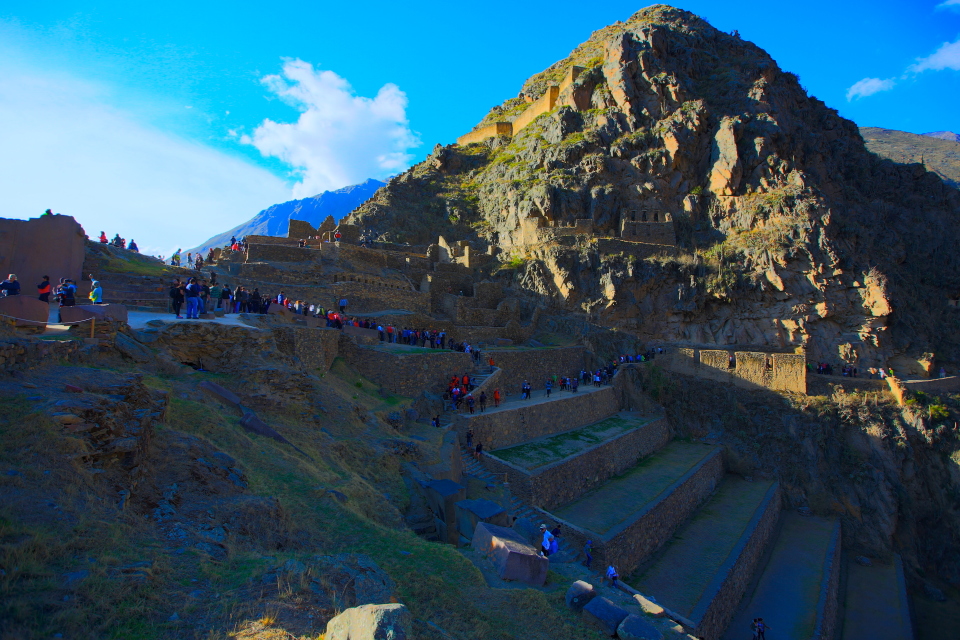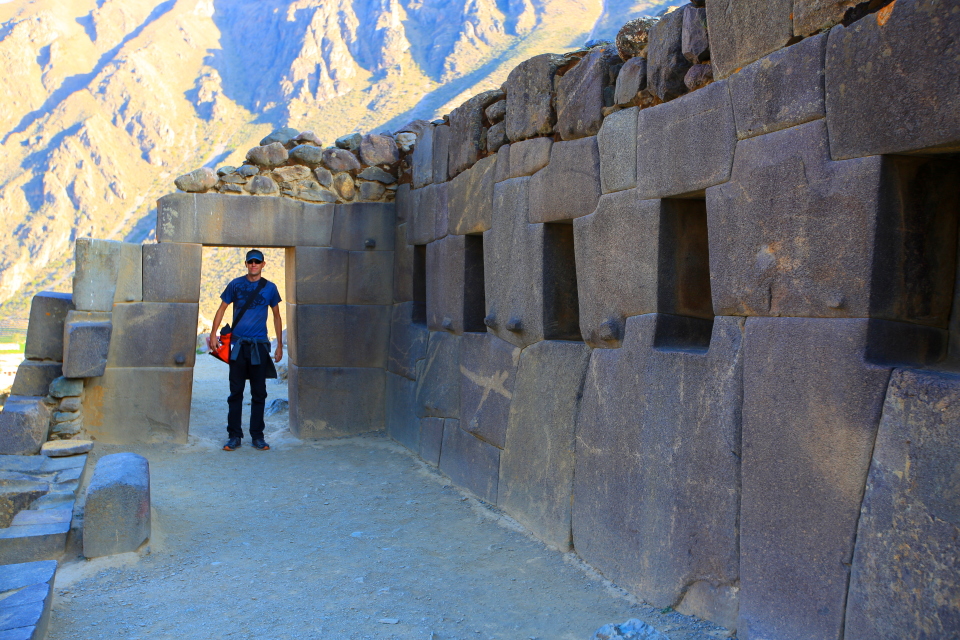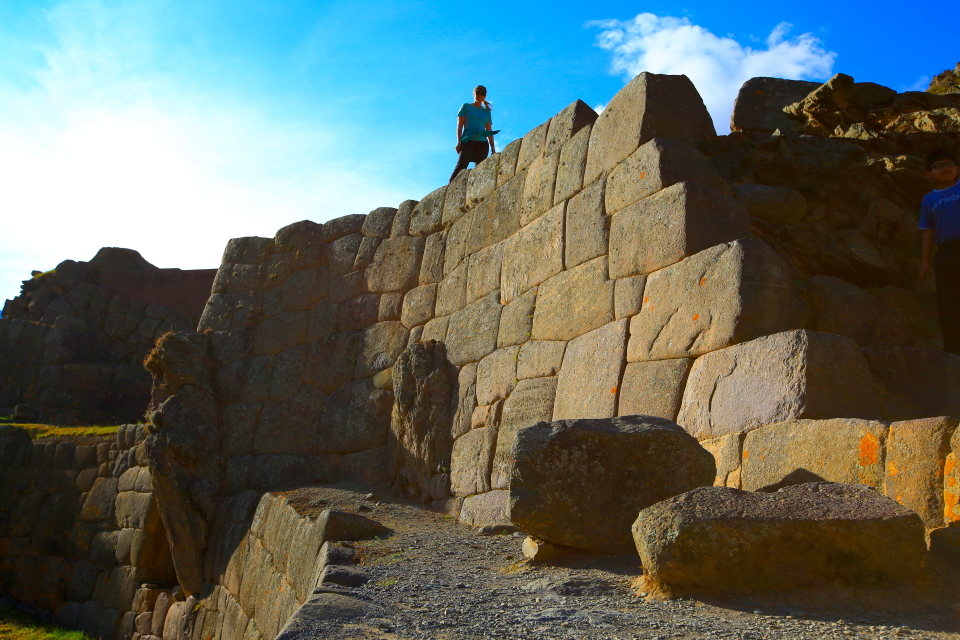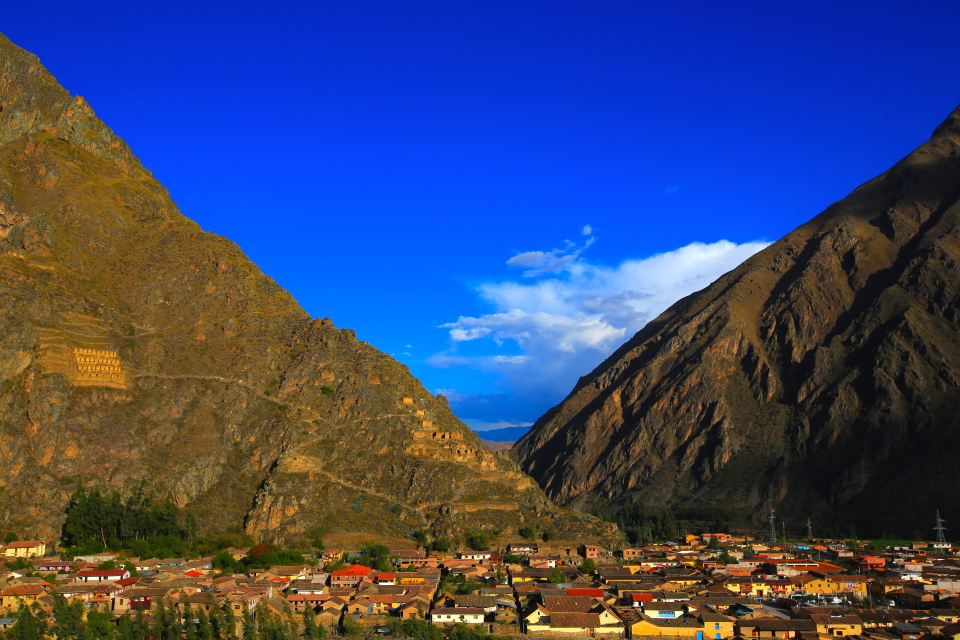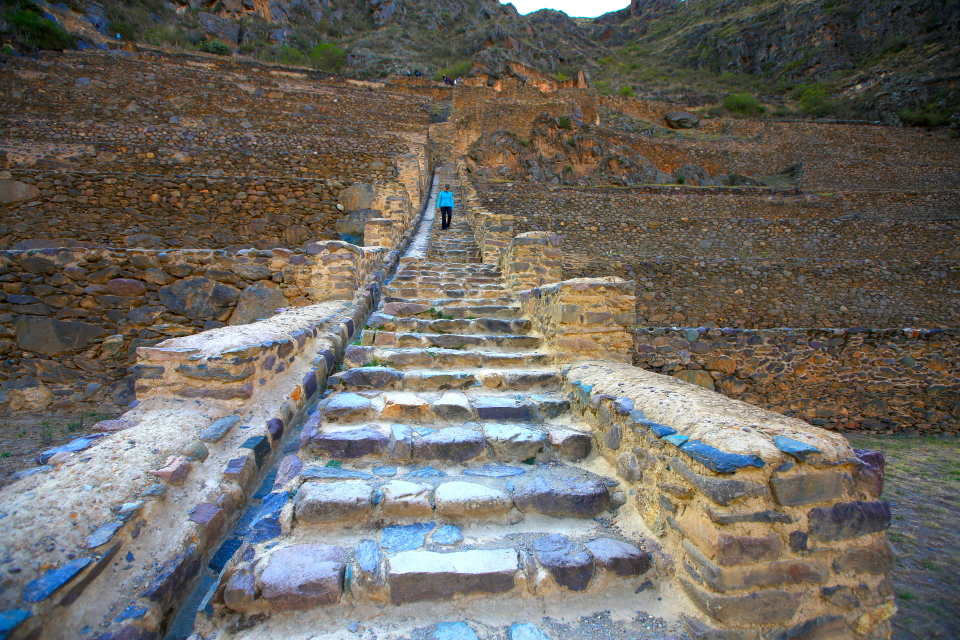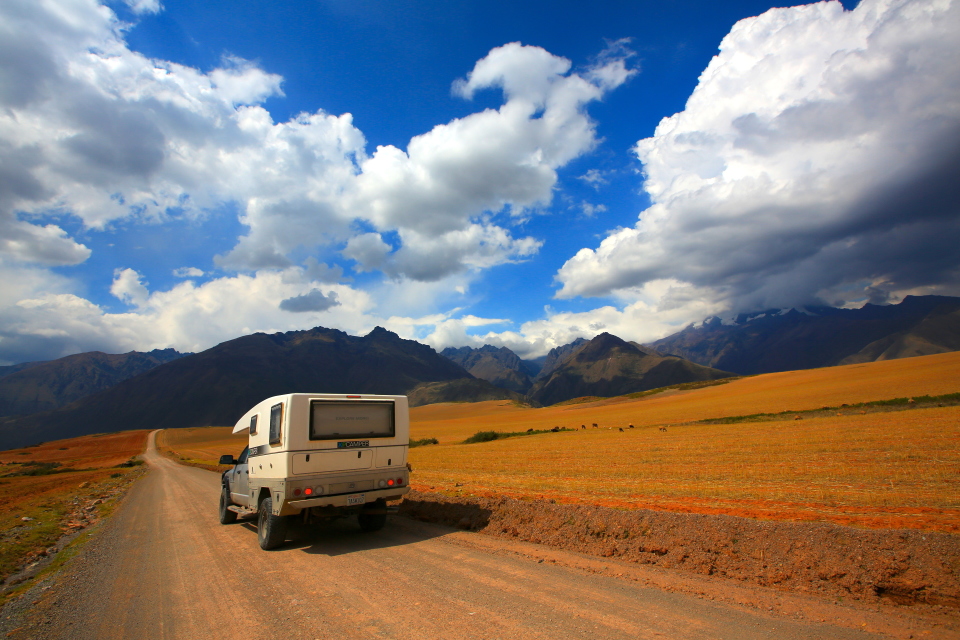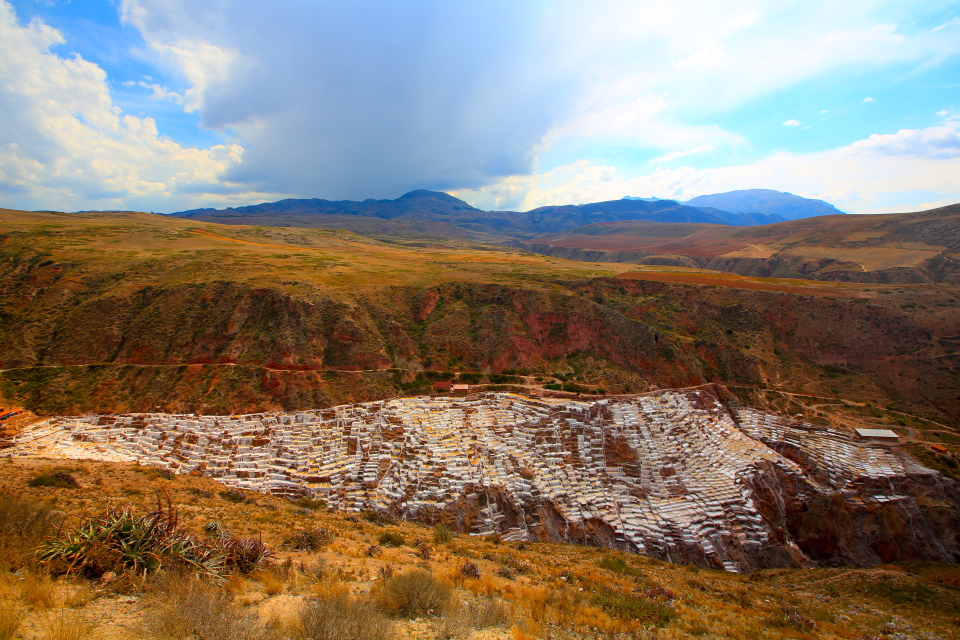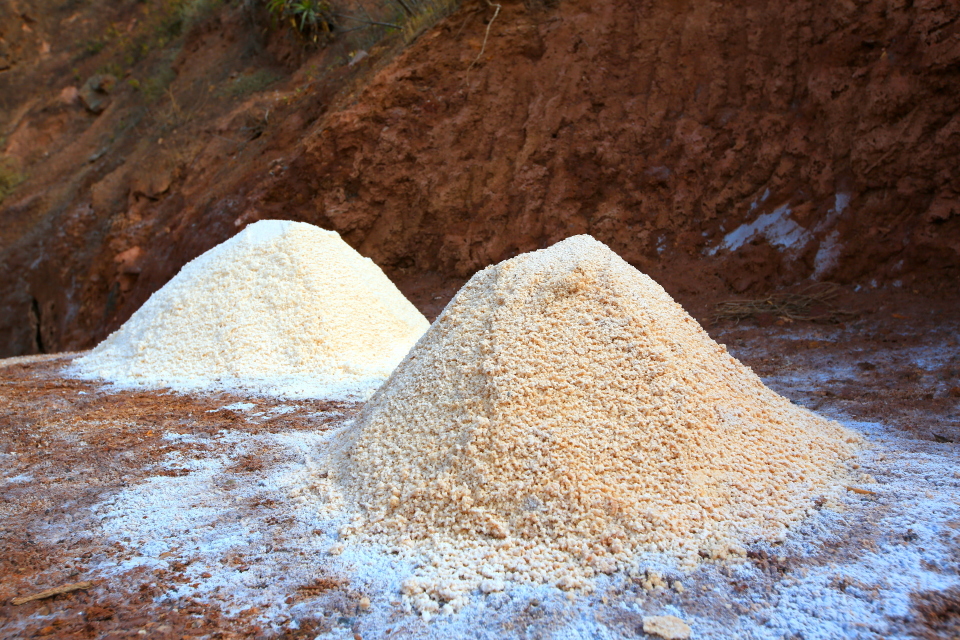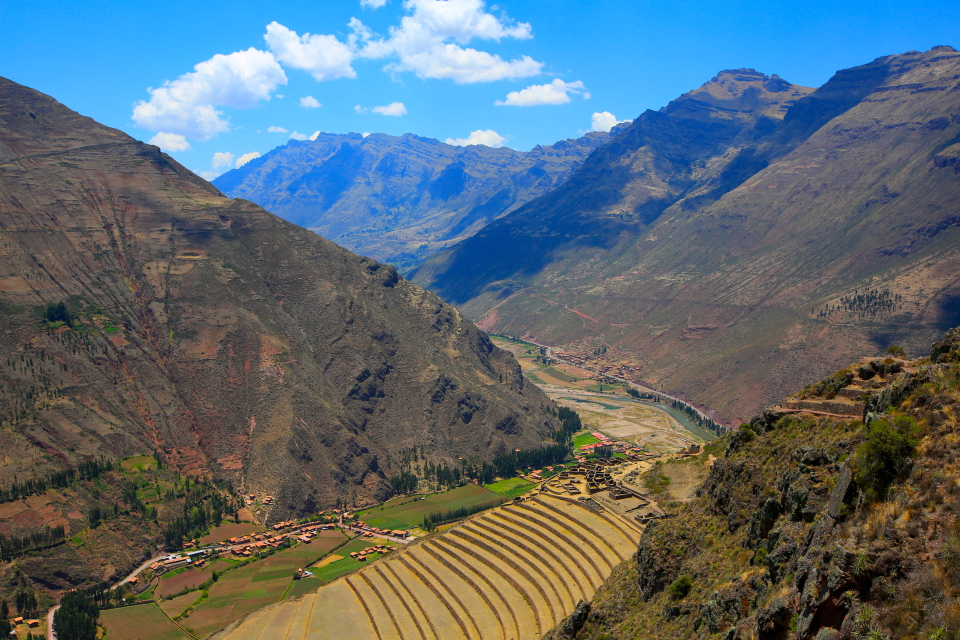So here is the thing, I am a tourist, but I hate being around other tourists. It is a syndrome many overlanders get I think. With the ability to do our own thing, and for the most part becoming a very independent traveler, having to line up behind three bus loads of people entering a tourist attraction suddenly becomes horrible. It makes it feel more like Disneyland then an archeological site.
Sam and I would look at each other and say things like:
“This place is crazy expensive! Two dollars for a bottle of water, it was .40 cents in Northern Peru!!!
“Five dollars an hour to park in a dirt lot in Peru!!!”
“I hate it here, there are too many gringos, where did all these people come from?”
As if we were also not Patagonia wearing, camera totting, site seeing gringos.
We were suddenly surrounded by tourists, many American, more tourists than we have seen on almost the entire trip and we felt out of place. It was a strange feeling. We have been traveling for so long, and in many places far away from the tourist radar that we did not feel like tourists anymore.
But I am not sure what that would make us. Travelers? Overlanders? That just sounds arrogant. We were not sure what to call it, but we realized the more we travel, the more we want to search out “authentic” experiences and get away from the tourist attractions.
However, I have come to terms with the fact that even the idea of “authentic travel experiences” is also a bit of a myth. What is truly authentic? As soon as we are introduced into the mix of a situation, we change it. We change the place, the people, we leave a mark. I can only hope that mark is a positive one.
For me, my favorite moments have been the ones that have surprised me, changed me, challenged me or moved me. Most of these moments have been in non touristy places where we are forced out of our comfort zone, or in nature. None of these occurred in the the Sacred Valley outside of our day at Machu Picchu.
I will blame it on the gringos.
The sacred valley is a place I am glad we got to see, but not a place we will ever go back to.The ruins all over the sacred valley are wonderful to explore and impressive in many different ways. The Inca were one of the most interesting and compelling cultures we have come across and the ruins they have left from the ingenious crop terraces, to the mind blowing masonry, is worth a visit. Just be prepared to share these experiences with hundreds of other tourists. And be prepared to pay prices four to five times higher than in other areas of Peru.
Ollantaytambo
This city is where we caught the train into Machu Picchu, it is also a really charming town where it feels like the Inca culture has survived and the ruins on the hills just blend into the city below. In fact this town has been inhabited since the 13th century and the town is still filled with Inca aqueducts moving water down from the valleys. Ans while this town still has a Inca feel, it also is the start of the Inca trail, which meant there are was a pizza restaurants every ten feet (not very Inca…).
The best part of the ruins are the fortress and temples on the hill. We went to the ruins on a Sunday and they were packed with bus loads of Peruvians and bus loads of gringos. Crazy, hundreds of people packed. We learned later that Sundays all Inca ruins in the Sacred Valley are free for Peruvian nationals, making them very crowded.
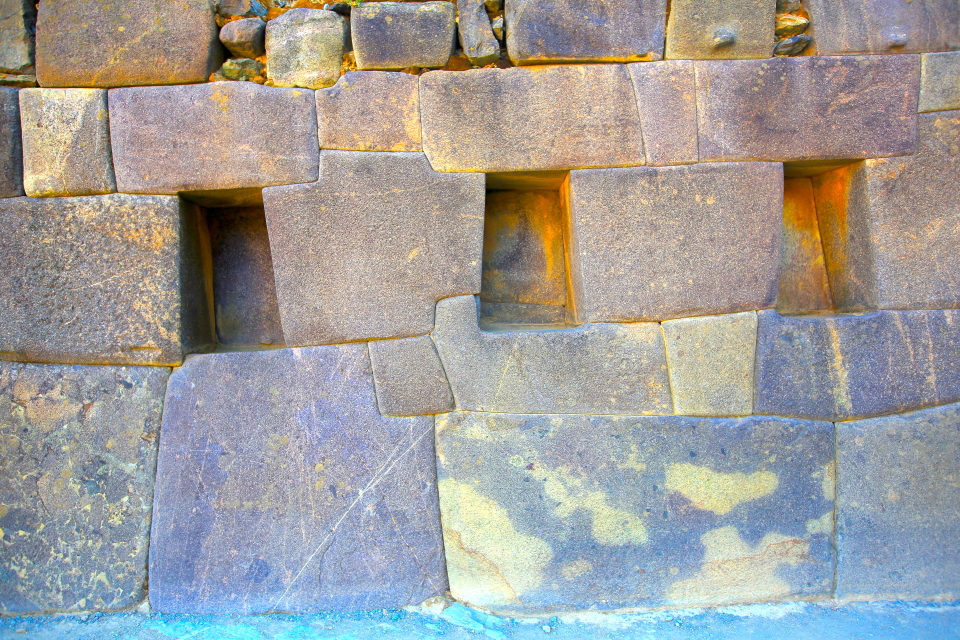
The Incas used molten bronze to fill the joints on these pink rocks which were going to be part of the Temple of the Sun which was never finished.
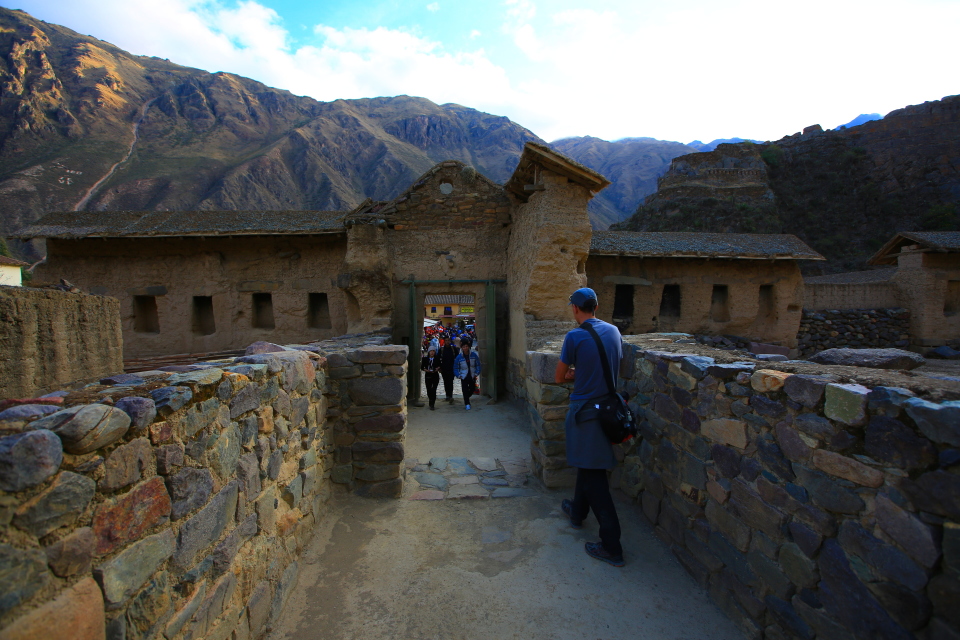
Leaving the ruins, the town almost blends in with it. Hard to tell where one stops and the other begins.
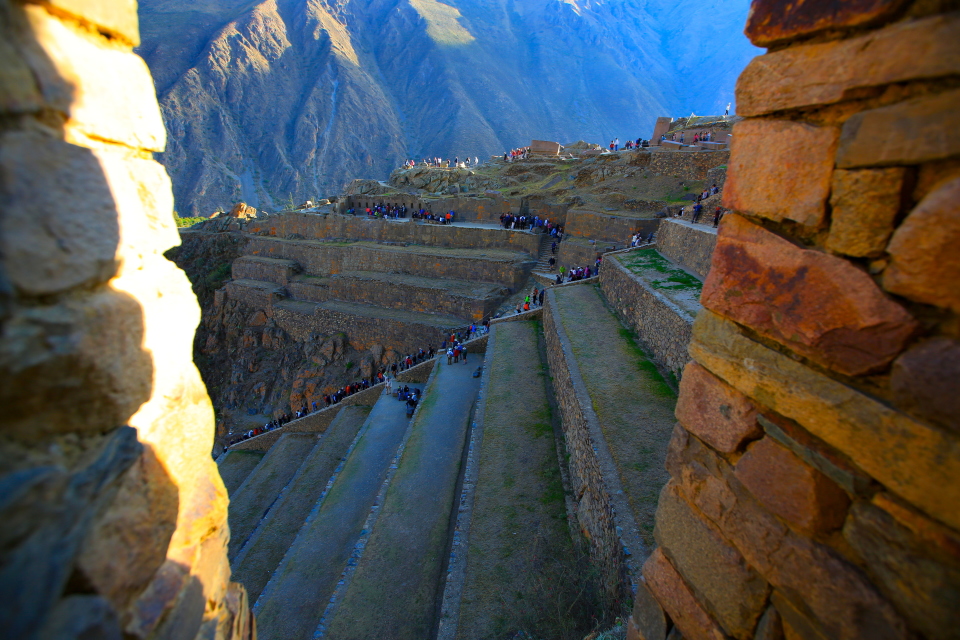
Last one of the crowds. I actually had multiple groups of Peruvian boys ask me here to take a picture with them. I said no. I can just imagine their Facebook caption “Look at this tall blond gringo I found!” =)
Moray
This was included on the Sacred Valley pass, a ticket that costs a fortune but includes all the sites in the Sacred Valley (aside from Machu Picchu) and will pay for itself in two site visits. If not, each site costs around $17 US a person!!! The pass is around $40 US a person. Moray was on the pass and we went, and it was interesting, but I challenge you to try and spend more than fifteen minutes here.
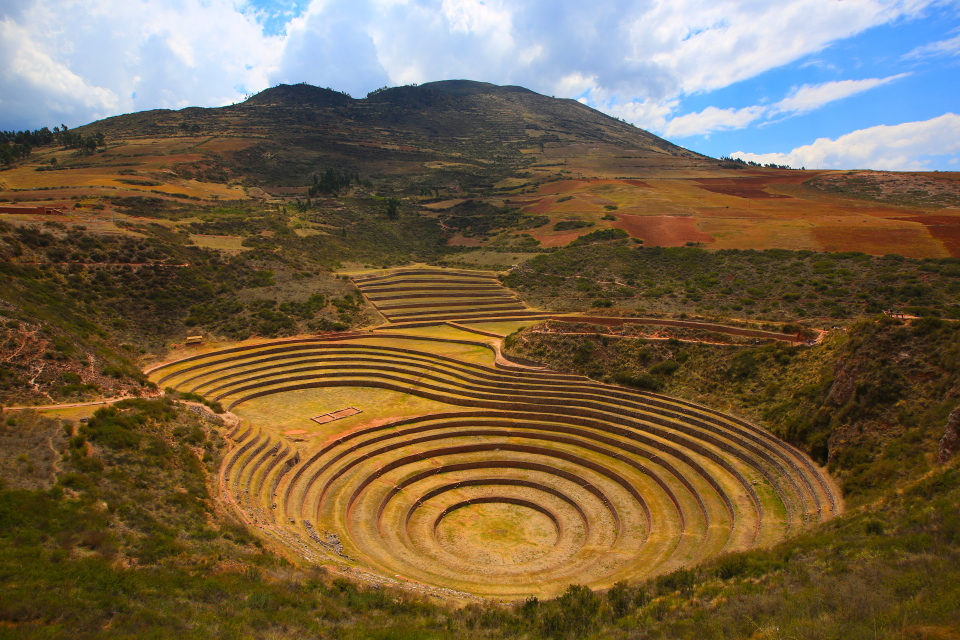
Historians think this was used by the Incas to test crops. Growing them in different conditions to see where they did the best.
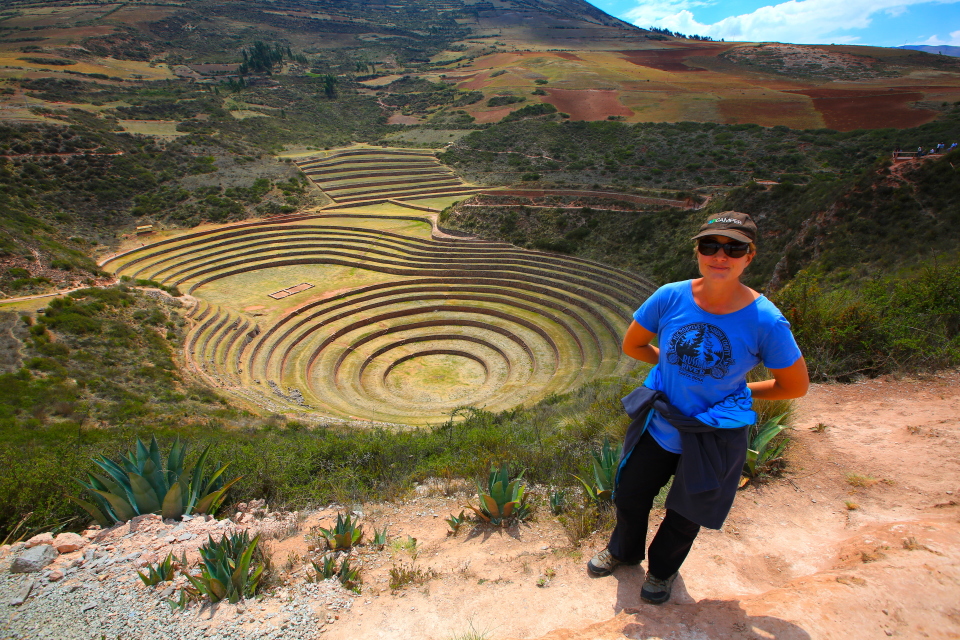
And yep folks, this is pretty much it. We tried to take different pictures, but they all came out the same.
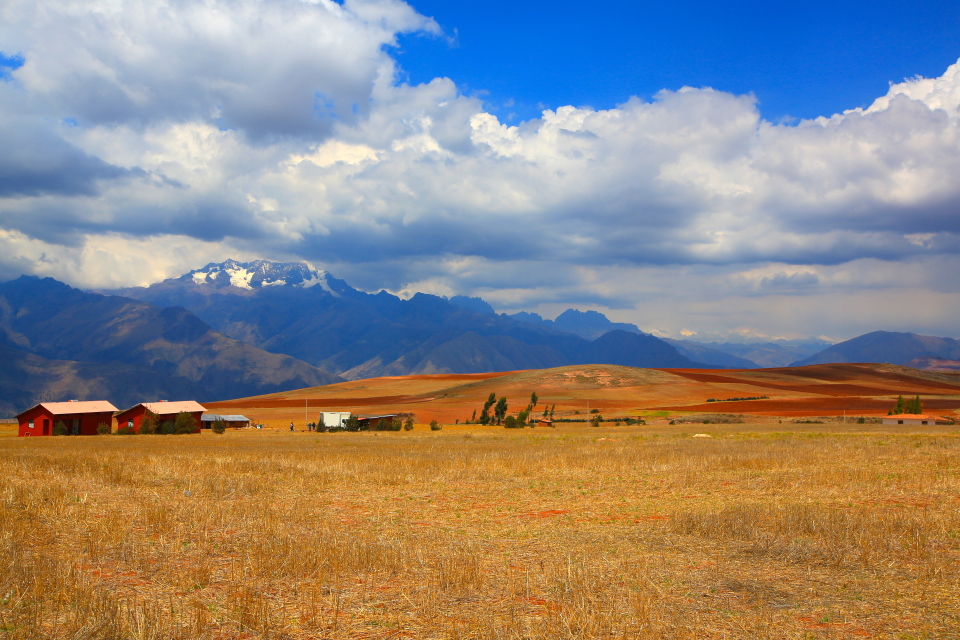
The scenery around Moray was really pretty. golden fields and snow capped mountains. Worth the drive out.
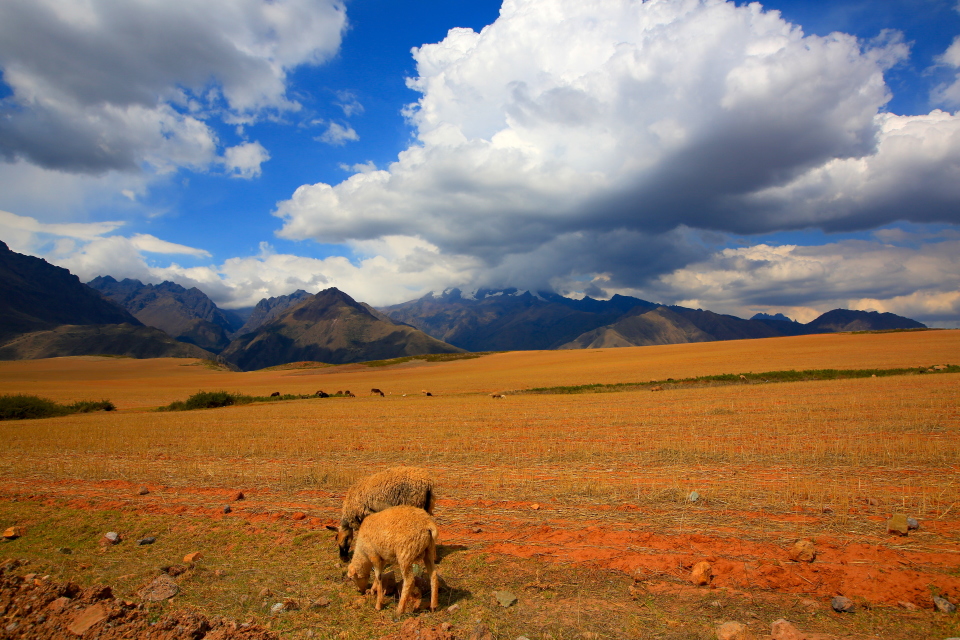
Most of this trip, we have been sharing our space with farm animals, not other people. I never thought I would prefer goats over people, but when traveling, they are much easier to share space with.
Salinas de Maras
This pre-Columbian salt mine was fascinating to me. The water is naturally salty, and over 3000 man made wells have been created to evaporate the water in the sun to create salt. The salt is still being mined here with methods that go back thousands of years. It was really cool and the colors made it look like another planet. Sam and I bought a bunch of different salt here and are still using it daily.
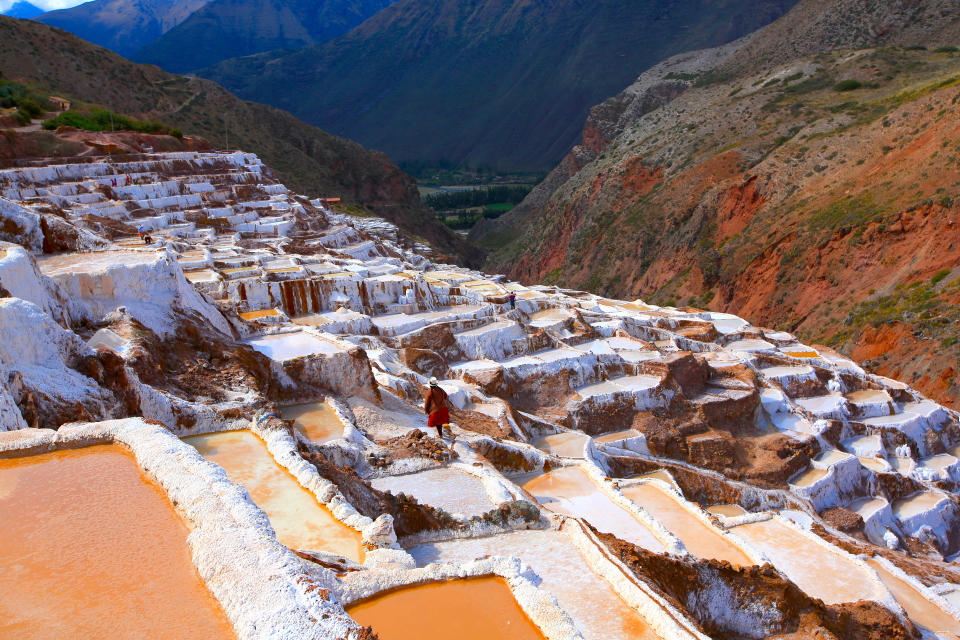
I love the woman in her traditional clothes walking around the salt. It was really interesting watching them harvest it.
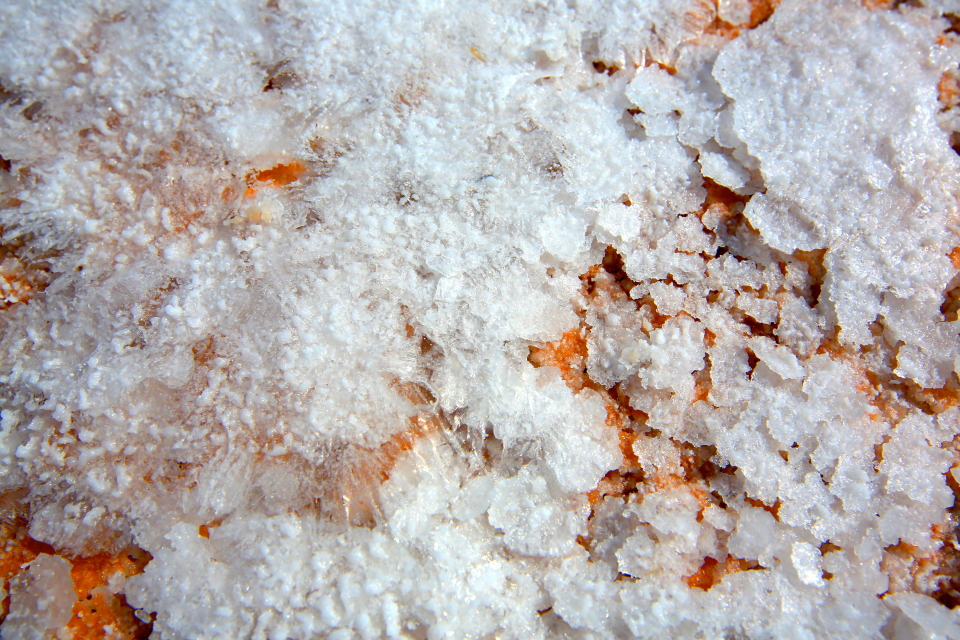
Sam had injured his knee and was not in the picture mood, so I got to take all the pictures here. It was fun.
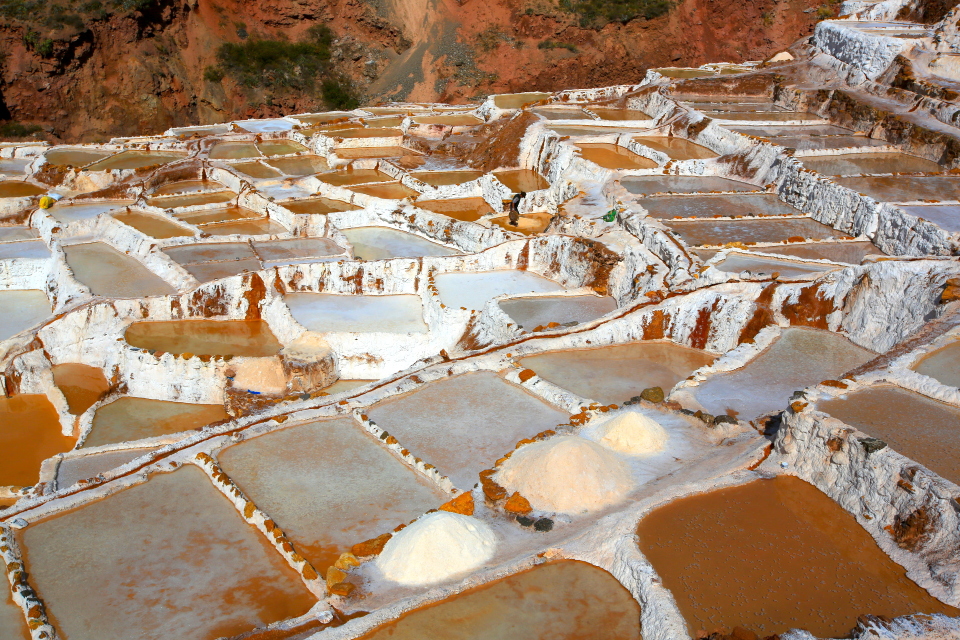
In this picture you can see a man stepping on the salt. I am not sure what it does, but it was part of the harvest technique.
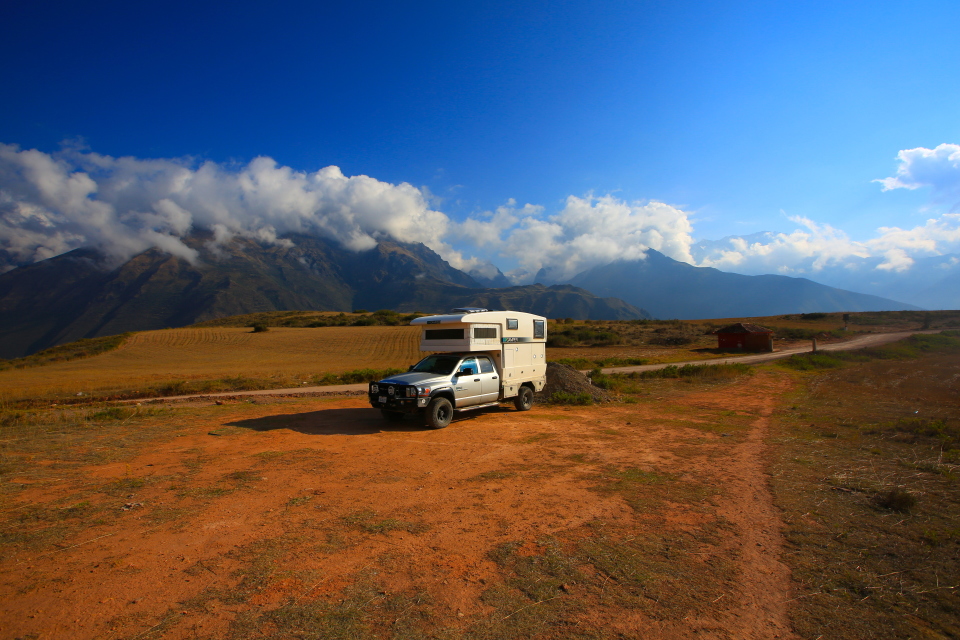
We asked the guy at the guard shack if we could camp at the salt mines entrance for the night. He said no problem and we got a free (and very cold) campsite with a view of the mountains. And not a soul around!!!
Pisac
Our last stop in the Sacred Valley was Pisac. These ruins were impressive to visit and huge. But very hard to photograph. I think mostly because they are so spread out and built into places that were hard to reach (it was a military fortress). I looked at the pictures afterwards and felt that not one of them really captured how cool these ruins were in person. The highlights for me were the terraces, the views of the valley as I hiked from one location to another, and the fortress built on the edge of the cliff. It was also really crowded here. But Pisac was spread out enough that if you let the tour group of 20 or so people pass, then the ruins were not unbearably crowded in between tour groups.
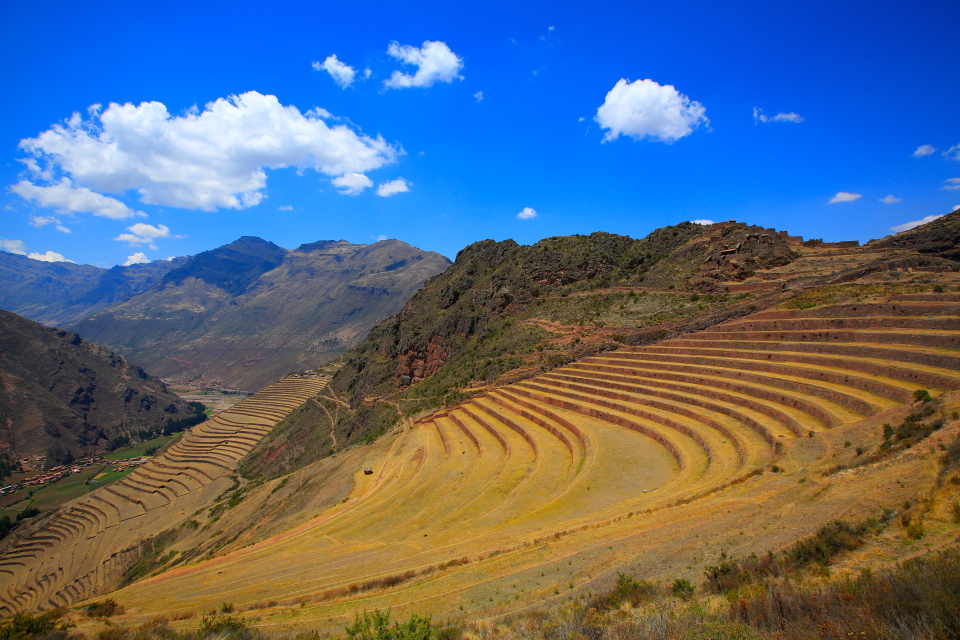
The terraces of Pisac. On the end of that point is the fortress and there are also ruins on top of the hill and below it.
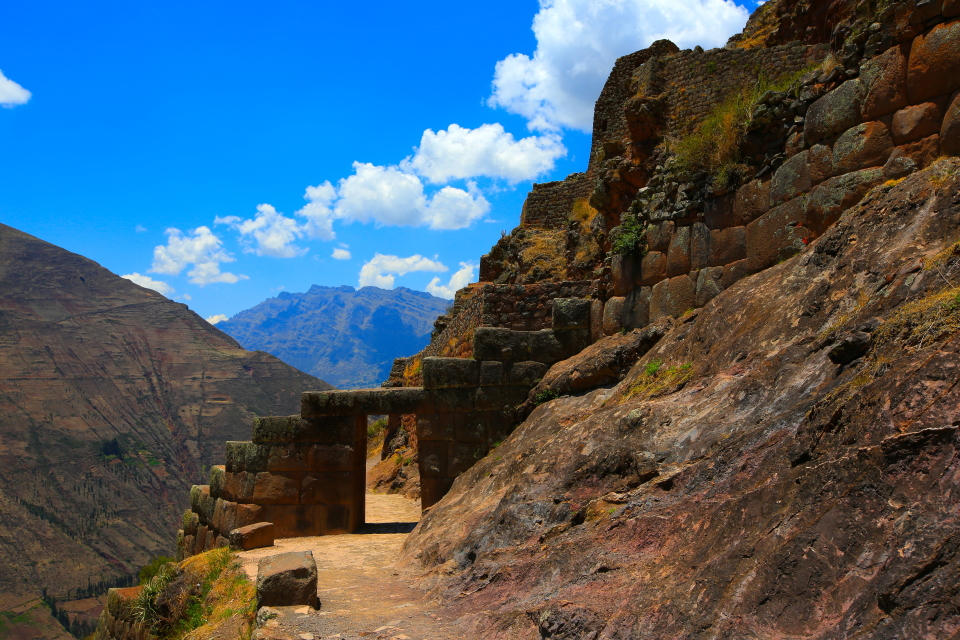
Sam knee was still sore, so I hiked around the ruins alone (maybe also why the pictures stink). I liked this door. It made me curious to if that area was covered by a building before.
There were more ruins we could have visited during our time in the Sacred Valley, but we kind of hit a wall, with both the ruins and the crowds. We also decided to not visit Colca Canyon (on this trip at least) and instead start our drive to Bolivia. We realized Peru was a place we had not even scratched the surface of, a place we loved and will overland again one day.
But on this trip, we felt the pull south. One of the hardest things for us is coming to terms with the fact we can’t see everything. What has made it easier is that we have both decided we will overland South America again one day at a much slower pace. And when we do, we will drive past the Sacred Valley and wave hello to all the gringos as we pass right on by.














